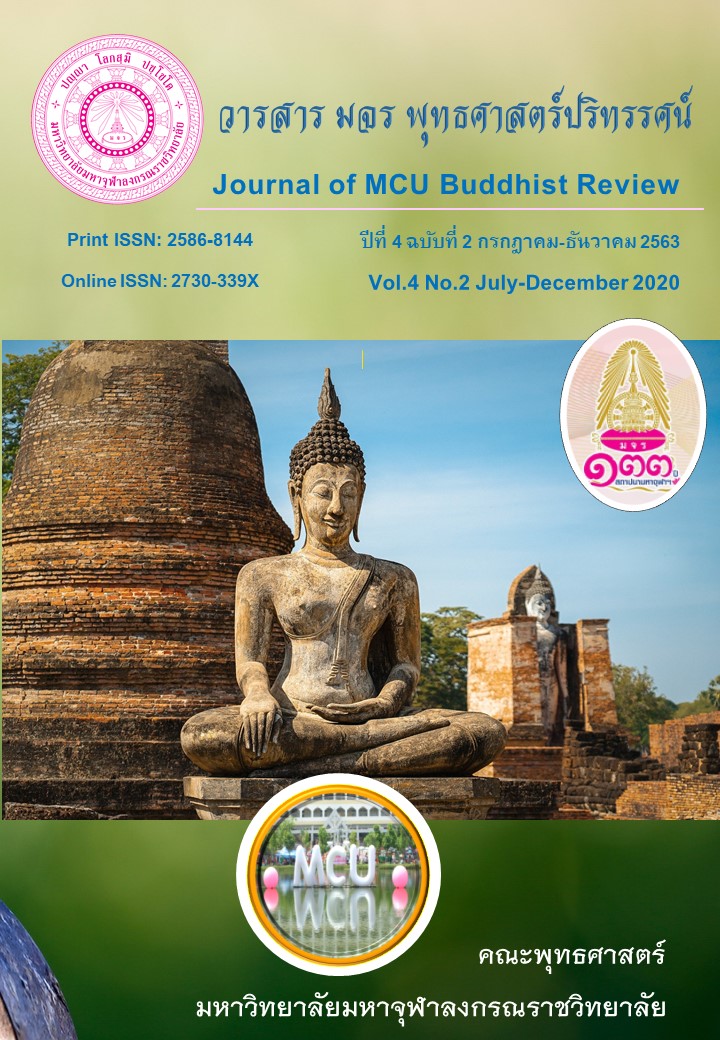คุณธรรมที่พึงประสงค์ของครูตามหลักพระพุทธศาสนา
Main Article Content
บทคัดย่อ
บทความนี้มีวัตถุประสงค์เพื่อแนวคิดเรื่องครูและเพื่อศึกษาคุณธรรมที่พึงประสงค์ของครูในสังคมไทยตามหลักพระพุทธศาสนา โดยใช้การศึกษาจากเอกสาร หนังสือและบทความที่เกี่ยวข้อง ผลการศึกษาพบว่า ครูในพระพุทธศาสนาพิจารณาถึงบุคคลที่มีองค์ประกอบทั้งภายนอกและภายในประกอบกัน โดยภายนอก ครู นั้นต้องมีบุคลิกลักษณะที่สังคมเชื่อถือคือประกอบอาชีพสุจริต และองค์ประกอบภายในนั้นจะต้องเป็นมีคุณธรรมที่ถูกยกย่องผ่านบุคคลต่างๆ ทางสังคมว่าน่าเชื่อถือ เป็นที่ยกย่องของศิษย์และคนทั่วไป ส่วนคุณธรรมที่ครูควรมีนั้นประกอบด้วยองค์ประกอบภายนอกและภายใน องค์ประกอบภายนอกประกอบด้วย สัปปุริสธรรม 7 และองค์ประกอบภายในประกอบด้วยกัลยาณมิตรธรรม 7 ประการ หลักอิทธิบาท 4 หลักพรหมวิหาร 4 และต้องหลีกเลี่ยงอคติ 4 ประการ ซึ่งจากข้อพิจารณานี้จะพบว่าคุณธรรมของครูที่พึงปรารถนาในพระพุทธศาสนา
Article Details
- บทความที่ได้รับการตีพิมพ์เป็นลิขสิทธิ์ของวารสาร มจร พุทธศาสตร์ปริทรรศน์
- ข้อความใดๆ ที่ปรากฎในบทความที่ได้รับการตีพิมพ์ในวารสาร ถือเป็นความรับผิดชอบของผู้เขียนบทความ และข้อคิดเห็นนั้นไม่ถือว่าเป็นทัศนะและความรับผิดชอบของกองบรรณาธิการวารสาร มจร พุทธศาสตร์ปริทรรศน์
เอกสารอ้างอิง
เชาวลิต อามานนทชัย.(2544). “การปฏิรูปการศึกษากับบทบาทและสถานภาพครู”.ข้าราชการครู. 10 (3): 2.
สมเด็จพระเทพรัตนราชสุดา สยามบรมราชกุมารี.(2545). “พระราชดำรัส ในพิธีเปิดงานวันครู ประจำปี 2545 ณ หอประชุมคุรุสภา วันที่ 16 มกราคม 2545”. วิทยาจารย์. 100. 15 (1): 1.
มหาจุฬาลงกรณราชวิทยาลัย. (2539). พระไตรปิฎกภาษาไทย ฉบับมหาจุฬาลงกรณราชวิทยาลัย. กรุงเทพมหานคร: โรงพิมพ์มหาจุฬาลงกรณราชวิทยาลัย.
พระพรหมคุณาภรณ์ (ป.อ. ปยุตฺโต). (2556). พจนานุกรมพุทธศาสน์ ฉบับประมวลศัพท์. พิมพ์ครั้งที่ 21. กรุงเทพมหานคร: สำนักพิมพ์ผลิธัมม์.
มหาจุฬาลงกรณราชวิทยาลัย. (2556). พุทธธรรม ฉบับปรับขยาย. พิมพ์ครั้งที่ 46. กรุงเทพมหานคร: สำนักพิมพ์สหธรรมิก.
พระสุขุม สุขวฑฺฒโก (มัชฌิกานัง). (2559). “ลักษณะของครูที่ดี”, ศึกษาศาสตร์ มมร. 4 (1), 31.


